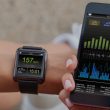One good turn deserves another
Depending on who's doing the talking, I generally am described in one of two ways: 1) as a teddy bear with a grizzly lurking inside, or 2) as a grizzly bear with a teddy bear lurking inside. I like to think of myself in terms of the former, but my profession demands that I be the latter. Nevertheless, I am a bit of a softy when it comes to stories that involve helping the less fortunate.
A few weeks ago, I spoke with Joe DiPasquale, the CEO of Regroup, which provides hosted group messaging services to government entities, schools and universities, and corporations. The company was started in 2006, when DiPasquale was a student at Stanford University in pursuit of a business degree. At the time, students were being inundated with e-mail messages from school administrators. The irony was that the students already had started to shy away from e-mail by that point, preferring texting or social media.
That realization got DiPasquale thinking. He eventually concluded that, within a population as diverse as that found on college campuses, multiple distribution methods must be employed. He further theorized that everyone has a preferred method for receiving message, and that the more methods that are employed, they more likely it is that a message will be received. This is important when informing students of an exam schedule change, but it is vital when a gunman is running loose on campus — a scenario that has become all too frequent.
It also works the same way with the population at large. As a result, the Regroup platform lets users distribute messages via e-mail, text, voice and social media.
"A certain demographic wants a voice call; another demographic wants to receive a text; another wants an e-mail, because they're stuck in an office all day; and yet another might want to just follow the Facebook page for their town," DiPasquale said.
At this point, you might be wondering why I was speaking to DiPasquale in the first place. The answer circles back to me being a bit of a softy. I learned that Regroup had provided its service free of charge to various organizations in the aftermath of Superstorm Sandy, so I picked up the phone. Another company I hadn't heard of — New Jersey-based Bricom Solutions — did something similar, donating a bunch of gear to FEMA and local authorities, including two-way radios and radio-over-IP equipment. In a bit of inspired thinking, the company deployed ROIP repeaters in areas where cellular coverage still was intact, which let first responders bypass public-safety LMR systems that had become jammed with traffic, according to the company.
I've always believed that one good turn deserves another, so in this season of giving and good will, I thought I'd place both companies on our readers' radar screen. Do with that what you wish. In the meantime, best wishes for a safe, healthy and productive new year.
Note to our readers: Several of you pointed out to me that I was off-base in last week's column, "Decades later, a mystery solved," when I wrote that tropospheric ducting explained why I was able to pick up an AM radio signal in Chicago that emanated from San Francisco. At night, such medium-wave signals travel in the ionosphere, not the troposphere. According to ARRL's David Sumner, what I experienced likely was the result of F-layer refraction. He wrote that it's the same phenomenon that makes worldwide shortwave communication possible, but it is less pronounced at the lower frequencies. Thanks to all for setting me straight.
What do you think? Tell us in the comment box below.


















